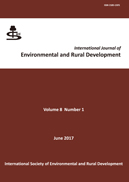Volume 2, Issue 2
Displaying 1-19 of 19 articles from this issue
- |<
- <
- 1
- >
- >|
-
2011 Volume 2 Issue 2 Pages 1-5
Published: 2011
Released on J-STAGE: November 23, 2023
Download PDF (278K) -
2011 Volume 2 Issue 2 Pages 6-12
Published: 2011
Released on J-STAGE: November 23, 2023
Download PDF (447K) -
2011 Volume 2 Issue 2 Pages 13-17
Published: 2011
Released on J-STAGE: November 23, 2023
Download PDF (245K) -
2011 Volume 2 Issue 2 Pages 18-23
Published: 2011
Released on J-STAGE: November 23, 2023
Download PDF (354K) -
2011 Volume 2 Issue 2 Pages 24-29
Published: 2011
Released on J-STAGE: November 23, 2023
Download PDF (553K) -
2011 Volume 2 Issue 2 Pages 30-35
Published: 2011
Released on J-STAGE: November 23, 2023
Download PDF (536K) -
2011 Volume 2 Issue 2 Pages 36-41
Published: 2011
Released on J-STAGE: November 23, 2023
Download PDF (581K) -
2011 Volume 2 Issue 2 Pages 42-47
Published: 2011
Released on J-STAGE: November 23, 2023
Download PDF (444K) -
2011 Volume 2 Issue 2 Pages 48-53
Published: 2011
Released on J-STAGE: November 23, 2023
Download PDF (269K) -
2011 Volume 2 Issue 2 Pages 54-59
Published: 2011
Released on J-STAGE: November 23, 2023
Download PDF (251K) -
2011 Volume 2 Issue 2 Pages 60-65
Published: 2011
Released on J-STAGE: November 23, 2023
Download PDF (293K) -
2011 Volume 2 Issue 2 Pages 66-71
Published: 2011
Released on J-STAGE: November 23, 2023
Download PDF (340K) -
2011 Volume 2 Issue 2 Pages 72-77
Published: 2011
Released on J-STAGE: November 23, 2023
Download PDF (290K) -
2011 Volume 2 Issue 2 Pages 78-83
Published: 2011
Released on J-STAGE: November 23, 2023
Download PDF (538K) -
2011 Volume 2 Issue 2 Pages 84-88
Published: 2011
Released on J-STAGE: November 23, 2023
Download PDF (446K) -
2011 Volume 2 Issue 2 Pages 89-94
Published: 2011
Released on J-STAGE: November 23, 2023
Download PDF (567K) -
2011 Volume 2 Issue 2 Pages 95-100
Published: 2011
Released on J-STAGE: November 23, 2023
Download PDF (348K) -
2011 Volume 2 Issue 2 Pages 101-107
Published: 2011
Released on J-STAGE: November 23, 2023
Download PDF (373K) -
2011 Volume 2 Issue 2 Pages 108-113
Published: 2011
Released on J-STAGE: November 23, 2023
Download PDF (237K)
- |<
- <
- 1
- >
- >|
